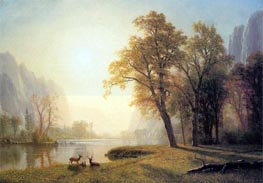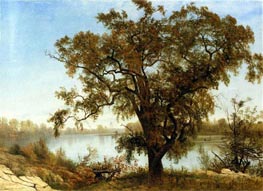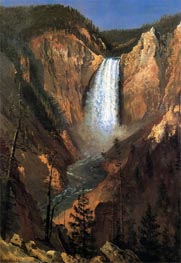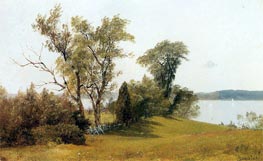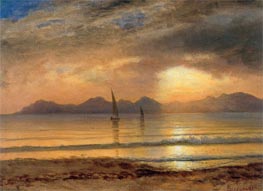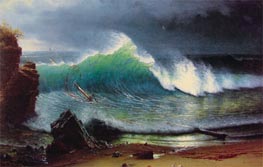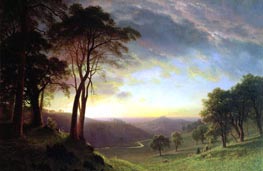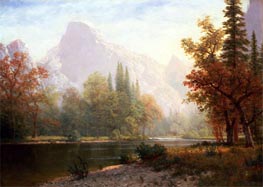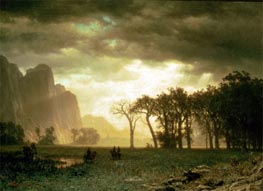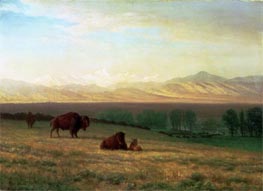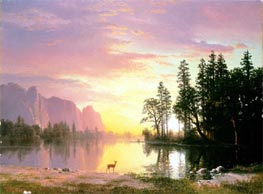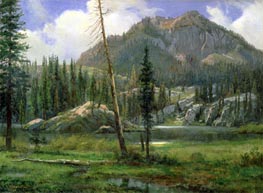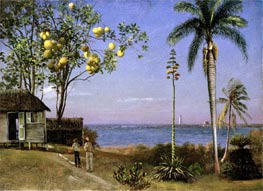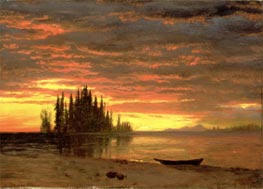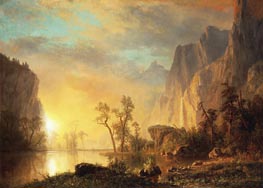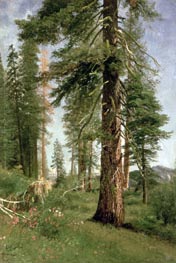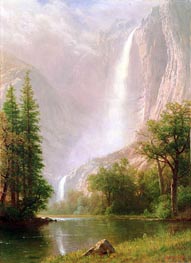Landscape Painting Reproductions - Page 227
Landscape painting is a genre of art that depicts outdoor scenes, such as mountains, forests, rivers, and gardens. The history of landscape painting dates back to ancient times, with examples from ancient Egyptian, Greek, and Roman art. During the Middle Ages, landscape paintings were mainly used as backgrounds for religious scenes, and it was not until the Renaissance that landscape painting emerged as a separate genre.
During the Renaissance, artists started to focus more on the natural world and began to experiment with perspective, light and shadow, and atmospheric effects in their landscapes. This period also saw the rise of topographical painting, which depicted accurate views of specific locations. During this time, artists such as Leonardo da Vinci and Albrecht Dürer produced iconic landscape paintings.
The 17th century Dutch Golden Age saw a trend towards landscapes that were more genre-like and less topographical, with scenes of everyday life and landscapes with rolling hills, waterways, and windmills. This period is also known for the development of the "Dutch light" style, which was characterized by a luminous, highly transparent quality of light and a preference for sunny skies. Painters such as Jan van Goyen and Jacob van Ruisdael became renowned for their realistic landscapes.
In the 18th and 19th centuries, Romanticism and the interest in the Sublime in art and literature led to a focus on dramatic, awe-inspiring landscapes. Painters such as J.M.W. Turner and Caspar David Friedrich used dramatic light, color, and form to evoke a sense of awe and drama in their landscapes.
The Impressionist movement of the late 19th century was characterized by its loose brushwork, light color palette, and emphasis on capturing the fleeting effects of light and atmosphere. Impressionist landscapes, such as those by Claude Monet and Pierre-Auguste Renoir, often depicted modern life, with leisurely scenes of parks, gardens, and the countryside.
Throughout the 20th century, landscape painting continued to evolve and diversify, with many artists pushing the boundaries of the genre through new styles and techniques. Some notable examples include the abstract landscapes of artists such as Mark Rothko and Joan Mitchell, and the photorealistic landscapes of Richard Estes and Ralph Goings.
Overall, landscape painting has a rich and varied history, reflecting the changing attitudes and perspectives of different cultures and time periods.
During the Renaissance, artists started to focus more on the natural world and began to experiment with perspective, light and shadow, and atmospheric effects in their landscapes. This period also saw the rise of topographical painting, which depicted accurate views of specific locations. During this time, artists such as Leonardo da Vinci and Albrecht Dürer produced iconic landscape paintings.
The 17th century Dutch Golden Age saw a trend towards landscapes that were more genre-like and less topographical, with scenes of everyday life and landscapes with rolling hills, waterways, and windmills. This period is also known for the development of the "Dutch light" style, which was characterized by a luminous, highly transparent quality of light and a preference for sunny skies. Painters such as Jan van Goyen and Jacob van Ruisdael became renowned for their realistic landscapes.
In the 18th and 19th centuries, Romanticism and the interest in the Sublime in art and literature led to a focus on dramatic, awe-inspiring landscapes. Painters such as J.M.W. Turner and Caspar David Friedrich used dramatic light, color, and form to evoke a sense of awe and drama in their landscapes.
The Impressionist movement of the late 19th century was characterized by its loose brushwork, light color palette, and emphasis on capturing the fleeting effects of light and atmosphere. Impressionist landscapes, such as those by Claude Monet and Pierre-Auguste Renoir, often depicted modern life, with leisurely scenes of parks, gardens, and the countryside.
Throughout the 20th century, landscape painting continued to evolve and diversify, with many artists pushing the boundaries of the genre through new styles and techniques. Some notable examples include the abstract landscapes of artists such as Mark Rothko and Joan Mitchell, and the photorealistic landscapes of Richard Estes and Ralph Goings.
Overall, landscape painting has a rich and varied history, reflecting the changing attitudes and perspectives of different cultures and time periods.
page 227 of 275
SKU: BAL-5048
Albert Bierstadt
Original Size: unknown
Private Collection
Albert Bierstadt
Original Size: unknown
Private Collection
SKU: BAL-5047
Albert Bierstadt
Original Size: unknown
Private Collection
Albert Bierstadt
Original Size: unknown
Private Collection
SKU: BAL-5046
Albert Bierstadt
Original Size: unknown
Private Collection
Albert Bierstadt
Original Size: unknown
Private Collection
SKU: BAL-5045
Albert Bierstadt
Original Size: 50.8 x 69.8 cm
Private Collection
Albert Bierstadt
Original Size: 50.8 x 69.8 cm
Private Collection
SKU: BAL-5044
Albert Bierstadt
Original Size: unknown
Private Collection
Albert Bierstadt
Original Size: unknown
Private Collection
SKU: BAL-5043
Albert Bierstadt
Original Size: 49 x 34 cm
Georgia Museum of Art Athens USA
Albert Bierstadt
Original Size: 49 x 34 cm
Georgia Museum of Art Athens USA
SKU: BAL-5042
Albert Bierstadt
Original Size: unknown
Private Collection
Albert Bierstadt
Original Size: unknown
Private Collection
SKU: BAL-5041
Albert Bierstadt
Original Size: unknown
Private Collection
Albert Bierstadt
Original Size: unknown
Private Collection
SKU: BAL-5040
Albert Bierstadt
Original Size: 91.5 x 66.3 cm
North Carolina Museum of Art Raleigh USA
Albert Bierstadt
Original Size: 91.5 x 66.3 cm
North Carolina Museum of Art Raleigh USA
SKU: BAL-5039
Albert Bierstadt
Original Size: unknown
Manoogian Collection Washington USA
Albert Bierstadt
Original Size: unknown
Manoogian Collection Washington USA
SKU: BAL-5038
Albert Bierstadt
Original Size: unknown
Private Collection
Albert Bierstadt
Original Size: unknown
Private Collection
SKU: BAL-5037
Albert Bierstadt
Original Size: 55.6 x 77.2 cm
Private Collection
Albert Bierstadt
Original Size: 55.6 x 77.2 cm
Private Collection
SKU: BAL-5036
Albert Bierstadt
Original Size: unknown
Private Collection
Albert Bierstadt
Original Size: unknown
Private Collection
SKU: BAL-5035
Albert Bierstadt
Original Size: 66 x 95.5 cm
Private Collection
Albert Bierstadt
Original Size: 66 x 95.5 cm
Private Collection
SKU: BAL-5034
Albert Bierstadt
Original Size: unknown
Private Collection
Albert Bierstadt
Original Size: unknown
Private Collection
SKU: BAL-5033
Albert Bierstadt
Original Size: unknown
Private Collection
Albert Bierstadt
Original Size: unknown
Private Collection
SKU: BAL-5032
Albert Bierstadt
Original Size: 78.7 x 124.5 cm
Butler Institute of American Art Youngstown USA
Albert Bierstadt
Original Size: 78.7 x 124.5 cm
Butler Institute of American Art Youngstown USA
SKU: BAL-5031
Albert Bierstadt
Original Size: unknown
Private Collection
Albert Bierstadt
Original Size: unknown
Private Collection
SKU: BAL-5029
Albert Bierstadt
Original Size: unknown
Private Collection
Albert Bierstadt
Original Size: unknown
Private Collection
SKU: BAL-5027
Albert Bierstadt
Original Size: unknown
Private Collection
Albert Bierstadt
Original Size: unknown
Private Collection
SKU: BAL-5026
Albert Bierstadt
Original Size: unknown
Private Collection
Albert Bierstadt
Original Size: unknown
Private Collection
SKU: BAL-5025
Albert Bierstadt
Original Size: unknown
Private Collection
Albert Bierstadt
Original Size: unknown
Private Collection
SKU: BAL-5024
Albert Bierstadt
Original Size: 76.5 x 51 cm
Private Collection
Albert Bierstadt
Original Size: 76.5 x 51 cm
Private Collection
SKU: BAL-5023
Albert Bierstadt
Original Size: 91.4 x 66.4 cm
Worcester Art Museum Massachusetts USA
Albert Bierstadt
Original Size: 91.4 x 66.4 cm
Worcester Art Museum Massachusetts USA



